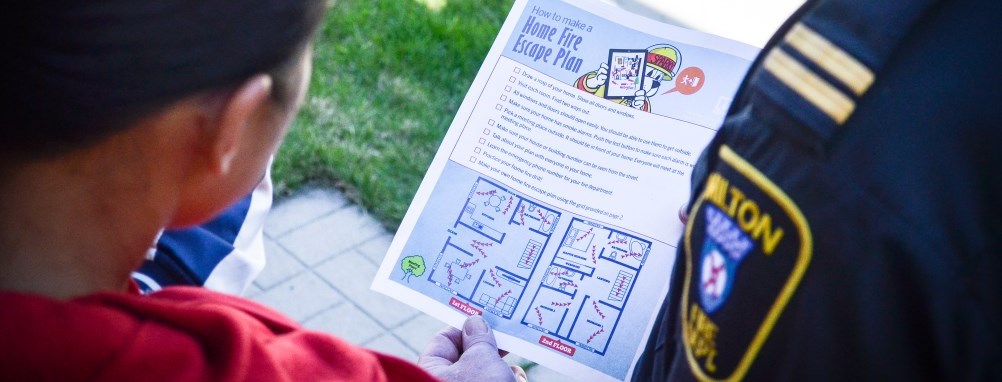Most fatal house fires occur during the night, giving you little time to react. We encourage you to take preventative measures to keep you and your loved ones safe. This includes installing warning systems, such as smoke alarms and carbon monoxide alarms.
Preventing fires at home
To prevent a fire and the spread of a fire, you should take the necessary home fire safety measures.
Smoke alarms |
|
According to the Ontario Fire Code, all homes must have a working smoke alarm on every storey and outside all sleeping areas. To maintain your smoke alarms and ensure they are working, you should:
If you are over the age of 65 and live in your own home, consider learning more about our Seniors’ Smoke Alarm Program. Smoke alarm systemsMany homes have smoke alarm systems that use an alarm monitoring service. Advantages of this type of service include:
|
Carbon Monoxide alarms |
|
Beginning on Jan. 1, 2026 updated carbon monoxide (CO) alarm requirements took effect to enhance home safety and protect against carbon monoxide poisoning. You should test your CO alarms monthly to make sure they are working. Carbon Monoxide is considered a silent killer because it is odourless, colourless and tasteless and is very difficult to detect. Carbon monoxide safetyIf your CO alarms go off, you should leave the building and contact Milton Fire & Rescue Services by calling 905-878-9251. Protect yourself and your family from CO poisoning, by ensuring that:
Watch our Carbon Monoxide awareness video to learn more about how to protect yourself from CO poisoning. CO poisoning symptomsCO poisoning symptoms are often confused with flu symptoms and include:
|
Prepare a home escape plan |
|
Fire can spread quickly through your home, leaving you with little time to respond and escape. Create a home escape plan so you can get out of your home quickly in the event of a fire. To make an escape plan, follow these steps:
Once you’ve developed a plan, you need to:
|
Display your house number |
| Having a visible address on your house is critical for emergency response. The House Numbering By-law requires all occupied residences to have a visible number displayed in front of the home. View the Town of Milton’s house numbering page for more information about numbering requirements and signs. |
Get a home sprinkler system |
| Fire sprinklers protect your property, save lives and may reduce your insurance premiums. Purchase a home sprinkler to help extinguish fires before they get out of control. |
Schedule a home inspection |
| We will provide home fire safety inspections to make sure your home meets the requirements set out in the Ontario Fire Code. During the inspection, we will identify code violations and provide solutions to make sure you are prepared for a fire. |
Responding to a fire in your home
Call 9-1-1 as soon as you are safe. If there is a fire in your home, you should:
- Stay low because smoke rises, leaving air at floor level
- Avoid opening doors or windows that indicate signs of heat or smoke
- Stop, drop and roll if your clothing catches on fire
- Avoid re-entering the building
Causes of fires
Common causes of house fires include:
- Careless smoking
- Improperly installed or improperly maintained wood stoves
- Faulty wiring
- Careless use of cooking equipment
- Careless use of flammable liquids
Contact Us



